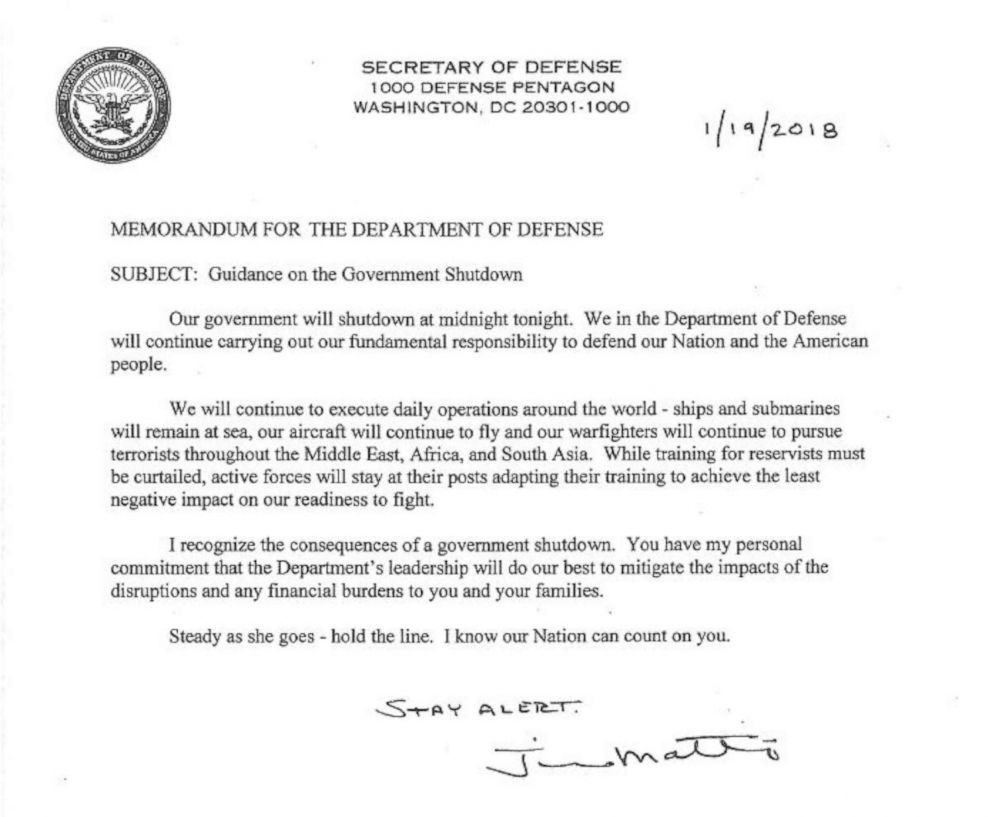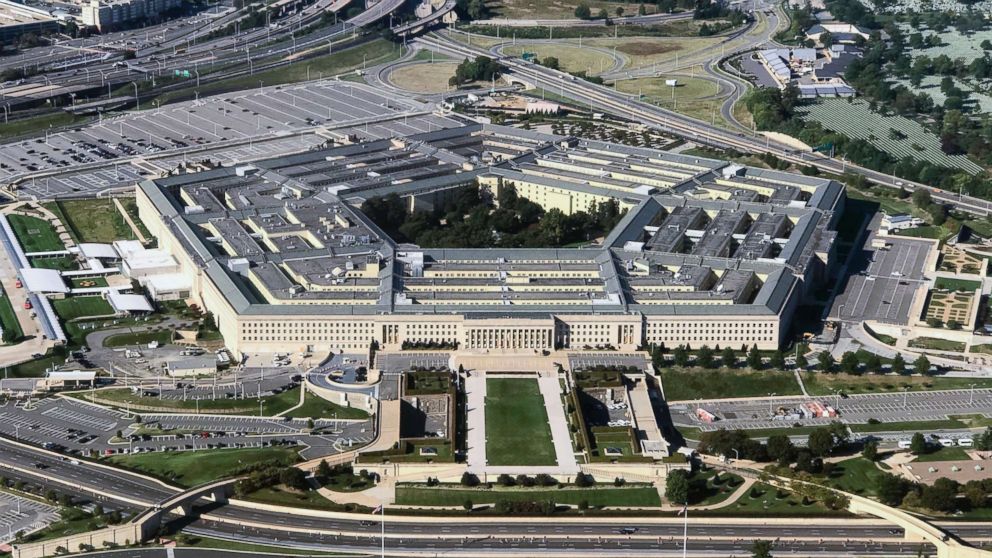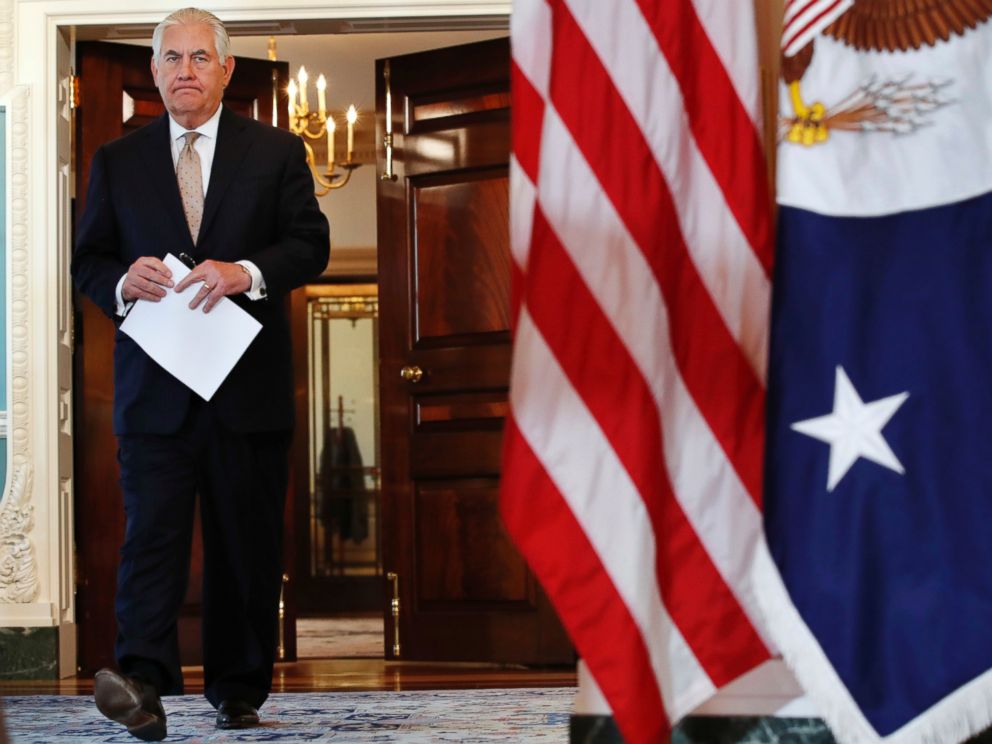Here's how a government shutdown could affect you
Here's how a government shutdown could affect you
— -- So the government shut down at 12:01 a.m. EST on Saturday after lawmakers unsuccessfully brokered a plan to continue government funding into next week.
But how will various branches and agencies of the federal government respond? Below, a primer of what to expect:
Some history
There have been 12 shutdowns since 1981, ranging in duration from a single day to 21 days, according to the Congressional Research Service. The last shutdown happened in 2013 and lasted 16 days.
Nearly 800,000 federal employees were out of work without pay. In addition, more than a million other working employees had their paychecks delayed. On day five of the shutdown, Congress voted to give the furloughed government employees retroactive pay.
Meanwhile, some members of Congress kept collecting their paychecks, while others voluntarily gave up their checks. According to estimates by the financial services company Standards & Poor’s, the last government shutdown cost America $24 billion, or $1.5 billion a day.
Congress still gets paid
It's the ultimate paradox. Salaries for members of the House and Senate are written into permanent law. That's why politicians get paid even in the event that congress can't agree on a bill to fund the government.
“Due to their constitutional responsibilities and a permanent appropriation for congressional pay, Members of Congress are not subject to furlough. Additionally, Article I, Section 6, of the Constitution states that Members of Congress ‘shall receive a Compensation for their Services, to be ascertained by Law, and paid out of the Treasury of the United States,’ and the 27th Amendment states, ‘No law, varying the compensation for the services of the Senators and Representatives, shall take effect, until an election of Representatives shall have intervened.’”
What happens to the military?
Deputy Secretary of Defense Patrick Shanahan issued guidance to top Department of Defense heads, including service secretaries, under secretaries of defense, and commanders of combatant commands, on Friday that outlines how the department functions in the absence of government funds.
The department lists "excepted" activities that it considers essential services during a government shutdown. At the top of that list is national security.
U.S. military options around the world continue unaffected, including the war in Afghanistan and ongoing operations in Iraq and Syria.All active duty (and reserve components on federal active duty) continue to work during a shutdown. Civilian personnel with the Department of the Defense who are deemed essential to "excepted" activities will also continue to work. However, both groups would not be paid until after the shutdown ends.


Non-essential Department of Defense civilian employees will be furloughed. During the 2013 shutdown, 400,000 of the department's 800,000 civilian workers were furloughed without pay, though they were later repaid after the shutdown.
Government contracts that were fully funded prior to the shutdown will continue, but new contracts (including renewals or extensions) will be halted.
Additionally, families will not receive the $100,000 death benefit provided for fallen service members. That money can cover funeral costs and family travel. It also helps to bridge the sudden halt of once-regular paychecks that the deceased was receiving -- paychecks that end immediately after the individual is killed.
During the 2013 shutdown, Congress worked to mitigate the shutdown's effects on the Department of Defense by passing a bill allowing for the death benefits to continue. Another bill allowed service members and "essential" Department of Defense civilian personnel to be exempt from the pay freeze.
What happens at the Department of Justice?
Out of 114,647 employees, 95,102 are excepted from furlough, representing 83 percent of DOJ employees. Most of these exempt employees, 72,242, are necessary to protect life and property.
Criminal litigation will continue without interruption, but civil litigation will be curtailed or postponed as long as safety of human life or protection of property are not impacted. Administrative services will curtailed and maintained only to the extent needed to support operations. Training will largely be cancelled.
What happens to the special counsel's Russia investigation?
The Special Counsel’s work will continue, as it is funded through a permanent indefinite appropriation. The Special Counsel’s Office is funded with a permanent indefinite appropriation and all direct employees are excepted positions because their funding is not dependent upon an appropriations that require renewal.
The U.S. District Court in Washington, DC, would have roughly three weeks of budgetary pad, meaning they can keep the lights on and doors open.
What happens at the State Department? Passport services?
The State Department provided guidance to its employees on Friday in advance of a potential shutdown.
Starting Monday, the agency will furlough non-essential personnel and require them not to work or even use their government-issued laptops or cell phones – although they could come in for four hours to finish any required work and prepare for when the shutdown ends.
Because some U.S. missions overseas are open Sunday to Thursday, those missions would move into restricted operations starting Sunday.
State Department spokesperson Heather Nauert said Thursday that the agency will do its best to “minimize the impact on the American people,” including passport and visa services. According to the agency’s internal guidance, “Consular operations domestically and abroad will remain 100% operational as long as there are sufficient fees to support operations” and except if housed in a different government building that is forced to close.
It’s the secretary’s office that reviews the available options and will make a decision, but they have no numbers yet on possible furloughs or anything.

“We’re not going to get all excited about what may or may not happen. We will have contingency plans that we put in place and we will adhere to those,” she said. But one area that won’t be touched: “We will not pull back on areas of national security or staff security.”
Tillerson is scheduled to travel to Europe next week, and the agency is still working to determine whether or not he would go, with one State Department official saying they were still awaiting guidance from Office of Management and Budget. Nauert said Thursday that Tillerson will follow all the necessary regulations very carefully, but won’t make any decisions until necessary.
The Under Secretary of State for Management normally handles the contingency plans for a shutdown, but because that role is still vacant under the Trump administration, William Todd, the acting Director of Human Resources, sent out the agency’s guidance instead.
Tillerson himself was asked about a shutdown during a photo-op with the Jordanian Foreign Minister and said the agency is ready, but hoping there isn’t a shutdown.
“We’re ready if that’s what happens. We hope not. We hope not, but we’re ready.”
What happens to the Supreme Court?
In the event of a lapse of appropriations, the Supreme Court will continue to conduct its normal operations, and the Court building will be open to the public during its usual hours. The Court will rely on non-appropriated funds, as it has in the past, to maintain operations through the duration of short-term lapses of appropriations.
What happens at other agencies?
Staffing at most agencies will be cut to just a fraction of normal levels across federal government agencies.
Consumer Product Safety Commission: The number of employees goes from 550 to 22. Investigations generally come to a halt. It continues to implement the most critical of recalls.
National Transportation Safety Board: Employees go from 405 to 22. Most investigations cannot be launched or continued during shutdown. However, if a major transportation accident occurs, it will be investigated.
Department of Education: Employees go from 4,000 to 250, more than 150 of those are from the student financial aid office... so already-awarded grants and loans can continue as normal.
Department of Homeland Security: Staffing would go down from 232,860 to 201,700. There will still be normal security at airports, train stations, etc...
FEMA will retain more than 12,000 of its 15,000 employees. But in October of 2013, the agency's administrative support reportedly suffered (IT, HR, etc...)
US Postal Service: You'll still get your mail.
Department of Transportation: Air Traffic Controllers keep directing flights. FAA, FRA, FTA and other agency investigations generally come to a halt unless they pose an imminent threat.
Social Security: Will continue to issue checks.
EPA: Employees were told to go to work next week in the event of a shutdown. Administrator Scott Pruitt said in an email that the EPA has "sufficient resources" to stay open for a limited amount of time.
USDA: Meat, egg, and dairy inspections continue. Food stamps are still available but could run out of money. Food inspections of processed and imported food conducted by the FDA would be suspended.
Customer service at many of these agencies, including Medicare and Medicaid could be impacted due to furloughed employees.
What happens at Department of Health and Human Services
The Centers for Disease Control and Prevention would have a tough time supporting its annual seasonal influenza program, among other programs. Reduced staffing and worker furloughs might be needed.
Neither CDC nor the Office of Management and Budget would elaborate when asked by ABC News.
What happens to NASA?
NASA says critical work continues - which would need to be identified. The space station is at the top of the list since there are people living in orbit.
Mission Control would continue to operate 24/7 with a critical needs staff.
However, there would be no more astronauts tweets, because they can’t actually tweet on their own – someone on the ground needs to push it out for them. They would assess various missions and see how far along they are in development - first up is the GOLD launch - which measures what happens when space weather from above meets terrestrial weather from below - but its launching from French Guiana so that helps. NASA space station management will be talking about two spacewalks coming up at the end of the month - to do critical work to maintain the space station Canadian robotic arm. The spacewalks would proceed but NASA won’t be televising them so if you don’t get a direct NASA wired feed you won’t know anything (we get those feeds here at out office at Johnson Space Center).
What happens to National Parks?
In a break from previous shutdowns, the administration has said that national parks will be accessible if the government shuts down this weekend, perhaps in an attempt to avoid the striking images of veterans being turned away from war memorials that we saw during previous shutdowns. Roads, trails, and memorials will be open but parks will not collect entrance fees and will not be staffed for basic work like picking up trash, staffing visitors centers, or issuing permits. Campgrounds will be closed.
According to the National Park Service contingency plan only 3,300 employees are deemed essential out of almost 25,000, 650 of which are Park Police. If the Park thinks areas of the park are not safe without guides the area can be closed but they cannot bring on additional staff to enforce the closure. Individual parks will have their own plans to determine what areas will be open.
What happens to the Smithsonian museums and the National Zoo?
In the event of a federal government shutdown Friday night, the Smithsonian museums and its National Zoo will remain open for the weekend. The museums and the National Zoo will be closed beginning Monday, Jan. 22. The Smithsonian also has two museums in New York City that will be closed – the Cooper Hewitt Design Museum and Heye Center, a branch of the National Museum of the American Indian.
The National Zoo live-animal cameras, including the panda cam, will not be broadcasting. All the animals will continue to be fed and cared for at the National Zoo. A shutdown will not affect the Zoo’s commitment to the safety of staff and the standard excellence in animal care.
ABC News' Lucien Bruggeman, Jeff Cook, Jack Date, Erin Dooley, Stephanie Ebbs, Conor Finnegan, Luis Martinez, Elizabeth McLaughlin, Gina Sunseri, Audrey Taylor, Trish Turner and Kelsey Walsh contributed to this story.




